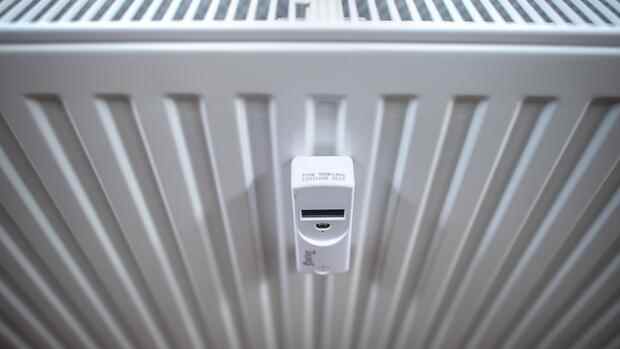Berlin From the federal government’s point of view, the participation of landlords in the heating costs aimed for by the traffic light coalition could become a case for the courts. This emerges from the corresponding draft law on the allocation of carbon dioxide costs, which is available to the Handelsblatt.
“It cannot be ruled out that there will initially be uncertainties in the application of the new legal situation in the tenancy,” says the joint draft by Federal Economics Minister Robert Habeck (Greens) and Building Minister Klara Geywitz (SPD), which is expected to be adopted by the cabinet next week target. “In isolated cases, this can lead to an increased need for advice or even to judicial clarification and a slight additional burden on the courts.”
At the same time, the ministries assume that the effect will subside again “after the legal situation has been clarified by courts and market participants and with increasing awareness among the circles involved”.
Since 2021, a price has been charged for carbon dioxide (CO2) emissions in Germany. There is currently a price of 30 euros per ton of CO2 that is emitted when heating and fuel is burned and is intended to motivate the reduction of greenhouse gas emissions. It should gradually increase to up to 55 euros in 2025. So far, these costs have been borne by the tenants.
Top jobs of the day
Find the best jobs now and
be notified by email.
From January 1, 2023, landlords should also bear part of the costs, depending on the energetic condition of the building. Habeck, Geywitz and Minister of Justice Marco Buschmann (FDP) agreed on this in April. The main result: the worse the energy balance of the building in question, the higher the cost share for the landlord.
Government wants ten-tier model
The draft law states: “The splitting of the costs according to a tiered model is intended to encourage tenants to save energy and landlords to make energy-saving refurbishments.”
The plans continue to use a ten-tier model to link landlord and tenant cost-sharing percentages to the building’s annual carbon footprint. In the case of apartments with a particularly poor energy balance, i.e. consumption of more than 52 kilograms of CO2 per square meter, the landlords bear 90 percent and the tenants ten percent of the CO2 costs.
Both sides must do their part, said the FDP’s building policy spokesman, Daniel Föst. Tenants could reduce the CO2 emissions of their apartment through their behavior, and owners could make the building climate-friendly overall through energy-related refurbishment. “It was important to us to prevent a blanket and ineffective halving of the CO2 price.” The yardstick for the division should not be a politically desired parameter. “Otherwise, exactly those incentives that we so urgently need in the building sector will be lost.”
>> Also read here: 1544 euros for 80 square meters: these additional costs are incurred by tenants with oil and gas
The building sector accounts for around 40 percent of greenhouse gas emissions and around 35 percent of final energy consumption in Germany. By 2030, emissions in the building sector must fall to 67 million tons of CO2 compared to 1990 in order to meet the emission levels stipulated in the Climate Protection Act. That is why the building stock must be energetically upgraded and the heat supply switched to renewable energies.
The CDU housing politician Jan-Marco Luczak accused the traffic light coalition of “pushing landlords and tenants into processes with their eyes open” with their “extremely bureaucratic and complicated” plans. “We need a practicable system reduced to a few levels with clear and simple criteria such as the year the building was built,” said Luczak.
NRW sees the burden on small landlords critically
There is also criticism in North Rhine-Westphalia: “Basically, I am still critical of the distribution of a consumption tax,” said North Rhine-Westphalia’s Construction Minister Ina Scharrenbach (CDU) to the Handelsblatt. “But the federal government wants it, and that’s why we’re dealing with it.”
Small landlords would be “burdened again and again,” said Scharrenbach. “More and more new bureaucratic obligations will contribute to the fact that more and more citizens will say goodbye to apartment rentals.” Real estate assets in Germany that can be let are “in the hands of the citizens – not in the hands of the company”. The bureaucratic burden alone that private and commercial landlords face is “estimated by the two federal ministries to be around ten million euros a year – and that is probably far too little”.
>> Also read here: Escalating additional costs: Tenants and landlords now have these options
The central association of the housing industry GdW called for the CO2 tax to be suspended “for a limited period of one year”. The purpose of the CO2 tax should be a control effect for the consumer and the landlord, said GdW President Axel Gedaschko. “In times of skyrocketing energy costs, however, that is cynical: Many people will no longer be able to afford many things in life due to the massive increase in energy prices. Landlords are also facing skyrocketing costs to maintain and modernize their homes.”
Kai Warnecke, President of the Haus & Grund owners’ association, also warned against imposing additional costs on the landlords, which would then be missing for the energetic renovation. In addition, the tenants would not be informed of the true costs of heating.
The splitting of the CO2 pricing is justified by the fact that tenants have no influence on the efficiency of the building and the system technology, said Warnecke. Haus & Grund has serious doubts that owners have this freedom of choice. According to Warnecke, there is a lack of suitable and affordable technologies and regionally available climate-neutral energy sources, naming district heating from renewable sources. Today, district heating is still largely produced from fossil fuels.
More: The crux of the heat transition – what makes the switch to climate-friendly heating systems so difficult
